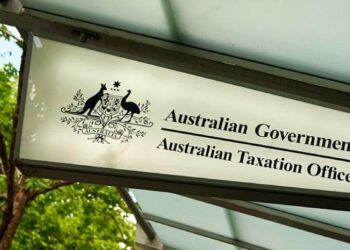In a recent AMP insights update, portfolio manager Jeronimo Harrison said that there are four risks in retirement that are becoming increasingly important to manage – the sequencing of returns, lower-than-expected returns, longevity risk and knowing how much a retiree can spend without falling short.
He noted the challenge for many pre-retirees and retirees is coming up with a solution that adequately balances all four risks.
“This is where good advice can play a role. Seeking greater returns may increase an individual’s sequencing risk, whilst being too conservative with one’s longevity strategy can result in living significantly below their means,” he said.
“The key for retirees is to ensure they are aware of all four risks; understand how their investment and spending strategy exposes them to each; and ensure this aligns with their risk preferences, values and long-term plans for retirement.”
Sequencing risk and lower-than-expected returns
Sequencing risk is the risk that the order and timing of an individual’s investment returns are unfavourable – or just plain bad luck, according to Mr Harrison.
“Consider the scenario where two retirees begin contributing $250 per month at the age of 25 with the aim to provide $50,000 income p.a. in retirement,” he said.
“During the accumulation phase they both invest in a balanced ‘70-30 growth-defensive’ asset portfolio, and upon retirement move into a conservative ‘30-70’ portfolio. Retiree 1 retires immediately following the Global Financial Crisis (GFC) at the age of 55. Retiree 2 retires two years later at 57, capturing the sharp rebound in markets in the aftermath of the GFC.
“While this is an extreme example, and does not consider factors such as tax, inflation, and the interaction of retirement savings with the government pension, it does highlight how two years of ‘bad luck’ can be the difference between running out of money at the age of 76 compared to 98 years old.”
While there is not a lot one can do about bad luck, Mr Harrison noted a possible solution is to invest in a lifecycle strategy which de-risks as individuals age to gradually reduce the size of potential losses in line with the reduction in their human capital (present value of future income from employment).
Other options include products with capital guarantees, or goals-based funds which have a dual objective of participating in rising markets but also limiting losses through protection strategies.
“Being prepared to be flexible around when an individual retires (if possible), such as working part-time for a few more years to smooth the impact of unlucky sequencing, can also make a sizable difference in retirement outcomes,” he noted.
“In a low return environment, retirees may be tempted to lean further into riskier assets (to increase returns), but with little to no remaining human capital that comes with significant risk. A sound transition to retirement risk management strategy in our view is key as most, including Retiree 1 in the example above, cannot afford to lose 30 per cent of their savings in the final years of their working life.”
When it comes to the risk of lower returns, Mr Harrison said this has become increasingly salient since the GFC, and now COVID-19, as central banks around the world reduced interest rates to record lows in an effort to stimulate economic activity.
“Only 10 years ago, a retiree could expect to earn 6 per cent on a term deposit1; these days they’re lucky to get 1 per cent. This issue has profound impacts for traditional investment solutions, such as a 50 per cent equities, 50 per cent bonds portfolio, which now has an expected medium-term (5-to-7 years) return of only 4.1 per cent, the lowest it’s ever been.”
“Low expected returns are largely a reflection of historically low bond yields, which make up a good portion of retiree’s assets, but also equities which are priced off those risk-free rates. The downward trend in interest rates has seen a steady rise in equity valuations on traditional metrics, such as price-to-earnings, which has brought returns forward but in turn decreased the yield and potential for outsized returns in the future.”
Managing longevity risk and spending in retirement
When managing retirement planning risks, retirees are also facing longevity dangers which refer to the risk of a retiree living beyond their savings. Mr Harrison observed the crux of this issue relates to designing an investment solution with an undefined investment horizon – no mean feat.
“In our view, it is problematic to save enough income for retirement based on an individual’s average life expectancy as there is a good possibility that one could live beyond this estimate,” he said.
“Joint probabilities exacerbate the issue, for example, a male and female couple at the age of 67 has a life expectancy of 85 and 87 years, respectively. However, their joint life expectancy is 92 years – and there’s a 10 per cent chance one will live beyond 99 years of age. Saving based on averages can be a precarious game.”
Instead of utilising life expectancy to plan for retirement, Mr Harrison said longevity risk can be fully insured against through an annuity, but in a low-interest rate environment, they can be expensive and may offer inadequate income.
“Reverse mortgages, if structured the right way, could also play a role. A lifetime pension solution, which pools the assets of retirees with the aim of sharing and mitigating longevity risk may also be an option for retirees looking for greater certainty that their income won’t run out,” Mr Harrison explained.
“The industry is relatively immature in this space; we along with others in the market are looking to innovate in this area to solve the issue of longevity in a cost-effective and transparent way.”
Furthermore, closely related to longevity risk is also the dilemma of how much to spend in retirement. More than half of retirees older than 65 currently drawdowns at the minimum statutory rate from their account-based pensions, and as a result many leave substantial balances when they pass away.
The Australian Government’s Retirement Income Review (2020) had found that retirees are reluctant to draw down at higher rates due to complexity, receive poor guidance around how to optimise retirement income and have concerns about their future health and aged care costs and have concerns about outliving their savings.
“The review presents a harrowing look into the psyche of many retirees who seek to self-insure against the risk of running out of money by being overly stringent on their spending, resulting in retirement living standards well below that of their working life,” Mr Harrison said.
“The reality is that many retirees could have lived a much more comfortable retirement with greater confidence to spend if they’d had a plan to deal with longevity risk.
“For many, a good strategy around how much to consume in retirement to best make use of their savings is arguably more important than their investment strategy.”


